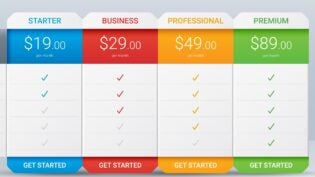
I feel like I’m about to emulate the famous Gordon Gecko speech in the movie Wall Street. In this case, “Selling Is Good! It helps our customers, it helps our companies, it is the foundation of our economy!”
OK, maybe I’m overreaching a little. But, lately I’ve read a number of articles that seem to confuse selling and buying. We have to be clear, we are sellers! Our roles and responsibilities are different from those who buy.
But there are those that seem to think that all that counts is buying. Forget the selling process, it’s the customer’s buying process that counts. A few days ago on Xoombi, Doyle Slayton asked “To Sell Or Not To Sell.” There’s no end to discussion about how people don’t want to be sold, they want to buy (I’ve even written a few posts along those lines myself).
But let’s be clear, the buyer’s job is to buy, and the seller’s job is to sell! And that’s as it should be. There’s nothing wrong with this, no need for apologies—as long as we are aligned to our common goal, which is to help the customer achieve their goals!
That’s where things start going south, when buyers and sellers get out of sync with what we are trying to achieve.
Buyers are trying to solve problems. They’re trying to address new opportunities, improve their businesses, find ways to grow, become much more effective and efficient.
Sellers can help buyers achieve these things. We can bring them insights, ideas, new approaches, novel solutions.
Buyers and sellers are different sides of the same coin. Without each other, it is difficult to achieve our goals. But we can’t confuse our roles.
As sellers, we want to be helpful to buyers—but only as long as we see a path to achieving our goal, which is to have the buyers buy something from us, ultimately generating profitable revenue. We are not in the business of charity. If there is no chance the outcome of a buyer/seller relationship results in a sale of our solutions, then we are wasting both the customer’s time and ours. The customer may be buying—but something for which we have no reasonable solution.
Likewise, if the customer has no need to buy, no problem to solve, no desire to change; regardless how compelling our approach, how powerful our insight, they won’t buy and we are wasting our and their time trying to sell.
Effective buying and selling has to be aligned to a common goal—driven by the customer.
There are things which each party does, sometimes purposefully, that cause us to be unaligned:
The sales person who cares more about the order than the customer achieving their objectives.
The sales person who tries to trick or manipulate the customer, selling something they don’t need or which will not help them achieve their goals.
The customer who threatens the long term viability of the suppliers by trying to negotiate bad, unprofitable deals.
All sorts of things cause the buying and selling relationship to be derailed.
Sure there is stress and disagreement in the process—but isn’t that part of any change process? Sure the sales person will do everything they can to persuade the customer they have the best solution—but likewise, anyone passionate about an idea or course of action will do all they can to persuade others on their idea and direction.
The sales person may push the customer, but as long as the motivation to that pushiness is driven by helping the customer accelerate the attainment of their goals, then what’s wrong with that?
We each, buyer and seller, have our own goals and objectives, as does each person in the customer’s buying group. We reach a successful outcome when we align around the primary goal or objective—solving a specific problem. At the same time, this is not incompatible with achieving our individual goals; again, we are not doing this for charity.
“Selling is good!” Let’s be good sales people, and let our customer be good buyers.
________________________________________
A strong sales process your people use is the cornerstone to driving the highest levels of sales performance. Learn how you can make your sales process a differentiator by asking for our Sales Process eBook. It’s free, email me with your full name and email address, I’ll be glad to send you a copy. Just send the request to: dabrock@excellenc.com,
________________________________________
A strong sales process your people use is the cornerstone to driving the highest levels of sales performance. Learn how you can make your sales process a differentiator by asking for our Sales Process eBook. It’s free, email me with your full name and email address, I’ll be glad to send you a copy. Just send the request to: dabrock@excellenc.com,
Published: April 25, 2013
3117 Views
3117 Views












